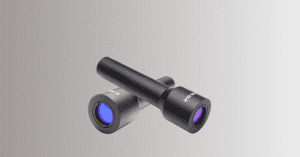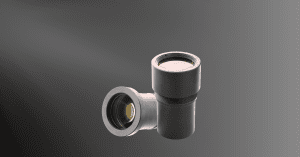Achromatic Laser Beam Expander Case Study Overview
A laser beam expander is a type of optical device commonly used in optical systems. Its main application purpose is to enlarge the beam diameter or compress the beam divergence angle. Refracting laser beam expanders evolved from telescopes and are often classified as either Galilean or Kepler-type. Both structures have their own advantages and disadvantages. Consequently, to adapt to different application requirements, the two forms of beam expander are modified, and optical devices for different application purposes, such as zoom beam expanders and achromatic beam expanders, are produced. The following is a case study of an achromatic beam expander.
Design Specifications of Laser Beam Expander
Wavelength | 1064nm & 532nm |
Magnifying Power | 5X@1064nm 5.1X@532nm |
Entrance Pupil Diameter | 10mm |
Exit Pupil Diameter | 50mm |
Laser Beam Expander Design Layout
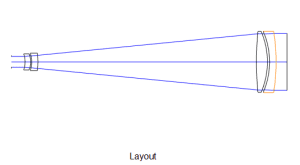
The design incident beam diameter is 10mm with a magnification of 5X, meaning that the outgoing beam diameter is 50mm. The design takes into account both 1064nm and 532nm wavelengths, which can realize beam expansion of different wavelengths at the same time.
Lens Configuration
The design uses a total of four lenses. In order to avoid laser convergence in the lens to affect the wave front, the design uses a Galilean structure, which can be applied to the use of high energy lasers. Moreover, since the beam expander is a focal-free system, it is usually measured by an interferometer to judge its performance. The transmission wavefront diagram of this design is shown below. The transmission wavefront PV of 532nm and 1064nm wavelengths is less than 0.25λ.

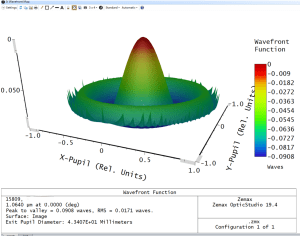
Transmitted wavefront diagram 532nm/1064nm
Achromatic Beam Expander Design
A conventional Galilean beam expander consists of a negative lens as the front group and a positive lens as the back group, which is simple in structure. However, if the air interval between the two lenses cannot be accurately adjusted, it is usually only suitable for a single wavelength. When two lasers of different wavelengths are used simultaneously in an optical system, an achromatic beam expander is required. Achromatic lenses use glasses with different dispersion and refractive indices paired together to achieve achromatic effects. Usually, in the form of gluing, a positive lens of crown glass and a negative lens of flint glass are glued together.
However, due to the poor laser resistance of the adhesive layer, if applied to a high-energy laser, it will cause damage to the device. Therefore, the design does not use glue-bonded parts; instead, the lens is a disassembled design, and an air layer is used in the middle. In addition to this, using an air space to separate the two lenses for chromatic aberration correction increases processing sensitivity. Therefore, the design also corrects the 633 nm wavelength, which is the interferometer’s conventional laser source. The performance of the beam expander is guaranteed through active installation and adjustment at 633 nm.
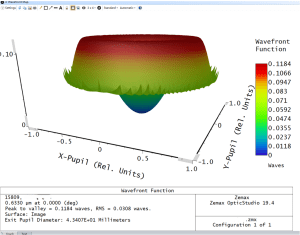
Summary of Achromatic Laser Beam Expander
The design is a 5X achromatic beam expander that simultaneously corrects the three common laser bands of 532nm, 633nm and 1064nm to meet the diffraction limit through the wavefront. Additionally, the lens does not use adhesive parts, and the performance of the lens is guaranteed by active assembly. The lens surface can be coated with AR film with a high laser damage threshold, which can improve transmission efficiency and meet the application of high energy lasers.
GREAT ARTICLE!
Share this article to gain insights from your connections!


